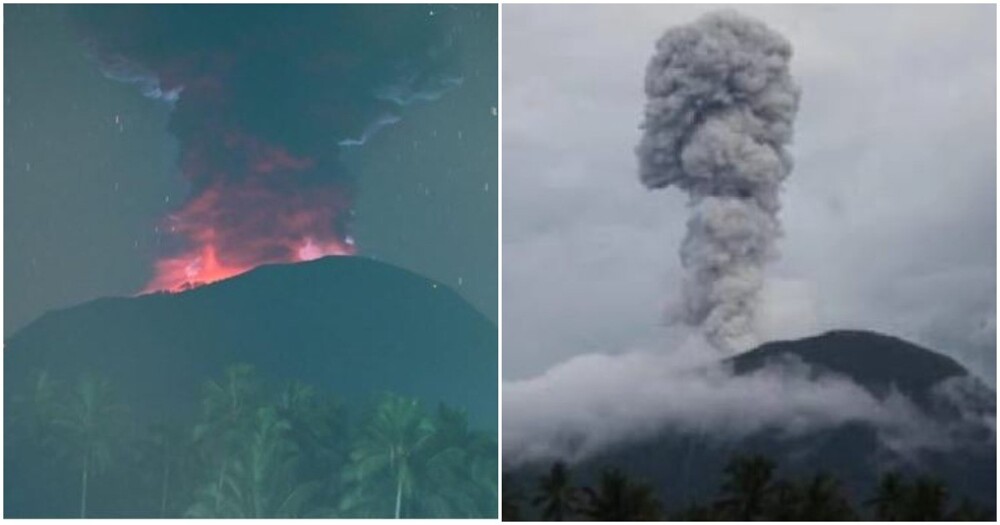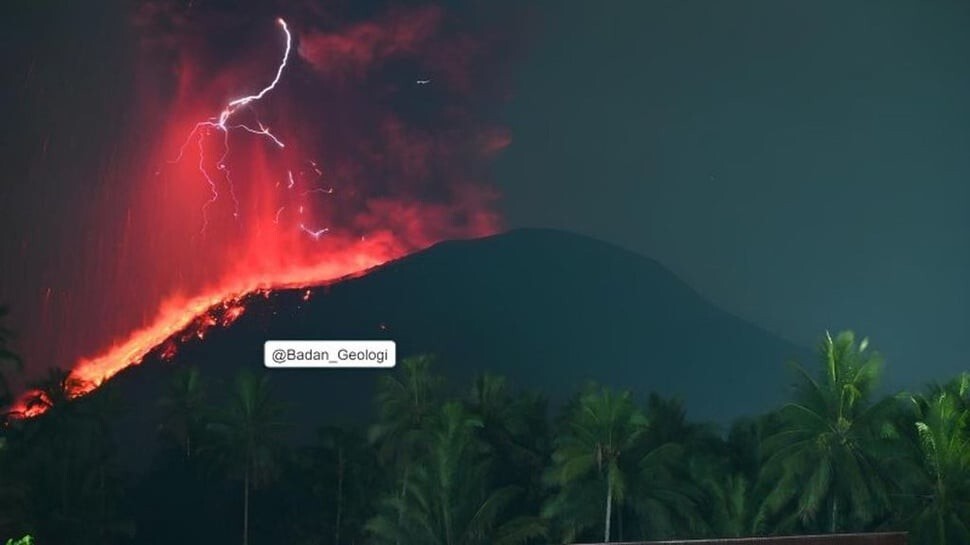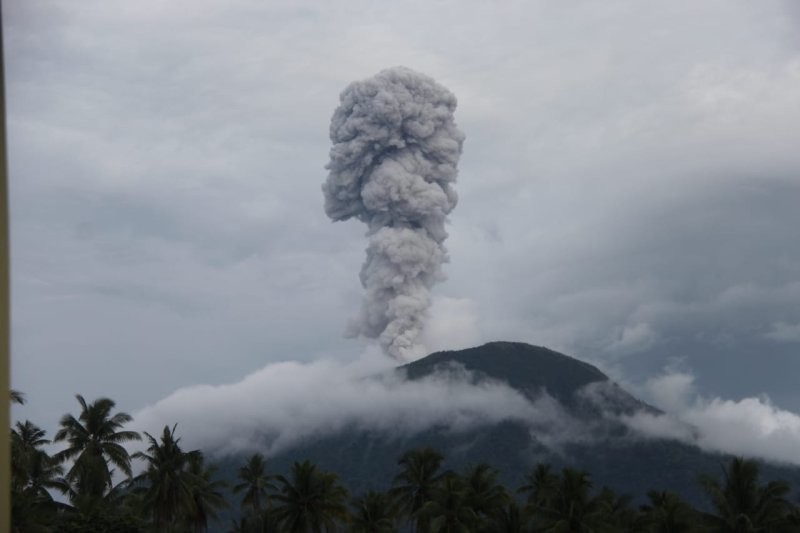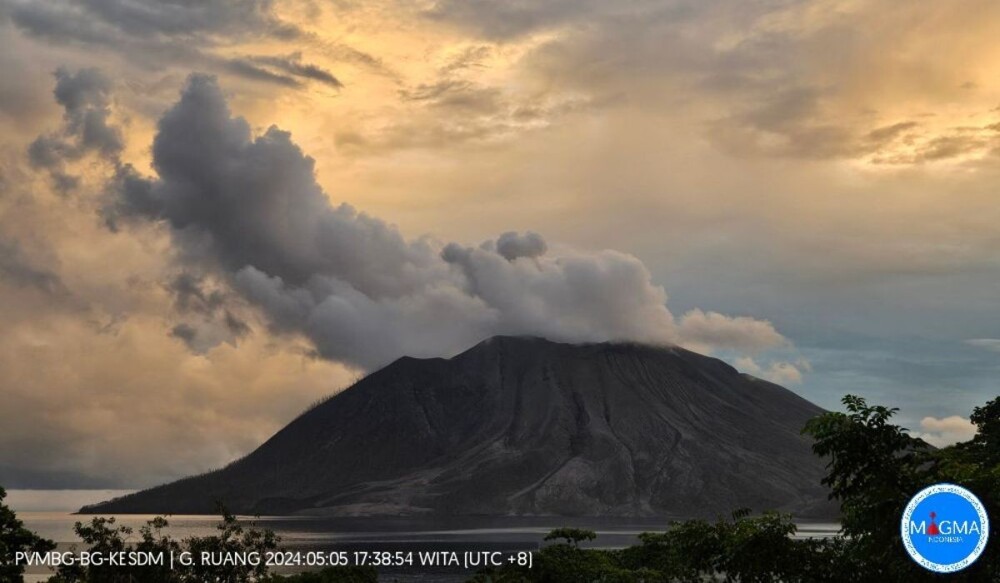A volcanic eruption began on an island with a population of 200 thousand people (4 photos + 1 video)
In eastern Indonesia, on the island of Halmahera, the Ibu volcano began to become active, throwing a cloud of ash into the air, rising to a height of up to 1.5 kilometers. 
Volcanic activity leads to thunderstorms. Hot lava and volcanic ash are ejected from the crater of a volcano, and an ash cloud is also formed. As a result, a unique natural phenomenon occurs - volcanic thunderstorms.
During a normal thunderstorm, lightning occurs due to the collision of ice and water particles that have different charges. And during a volcanic thunderstorm, lightning occurs due to the collision of ash particles and volcanic gases. 
Center for Volcanology and Geological Mitigation (PVMBG) head Hendra Gunawan said the eruption, which occurred on Saturday (11/5) at 00.24 IST, produced an ash column up to four kilometers high. "The eruption of hot lava is about 800 meters above the summit."
The eruption of Mount Ibu resulted in the release of ash to a height of 1200 meters. In the Tabaru region, the eruption affected 16 villages. 
Meanwhile, hot lava emissions have already descended 1000 meters below the rim of the crater. The sounds of impacts and roars resulting from the eruption were heard all the way to the Gunung Ibu observation post. Gunung Ibu, which is 1,325 meters above sea level, is currently on Level III alert since May 8, 2024. 
From April 16 to May 8, 2024, violent natural activity was recorded in Gunung Ibu, namely: 130 eruptive earthquakes, 8 avalanches, 1445 wind gusts, 53 harmonic earthquakes, 9 tornillo earthquakes, 6742 shallow volcanic earthquakes, 116 deep volcanic earthquakes, 15 local tectonic earthquakes, 231 distant tectonic earthquakes and 1 earthquake was felt even by residents of remote settlements.
“People in the vicinity of G. Mothers are asked to remain calm and vigilant, not to climb or approach Mount Ibu within a 3 km radius and not to extend the sector 5 km towards the opening of the crater in the northern part of the active crater of Mount Ibu (Duono, Tokuoko, Goin villages , Togorebasung, Sangajineku, Toguys, Todoke and Borona)," authorities said.
Halmahera Island has an area of 17,780 square kilometers. There are at least 2 volcanoes on its territory. According to various sources, from 220 to 450 thousand people live on the island; unfortunately, different sources give different figures; it is not possible to establish the real one.
While your stupid author was studying what volcanic thunderstorms are and what causes them, 11 kilometers from the second largest city in Guatemala with a population of 300,000, Quetzaltenango, the eruption of the Santiaguito volcano began.





















